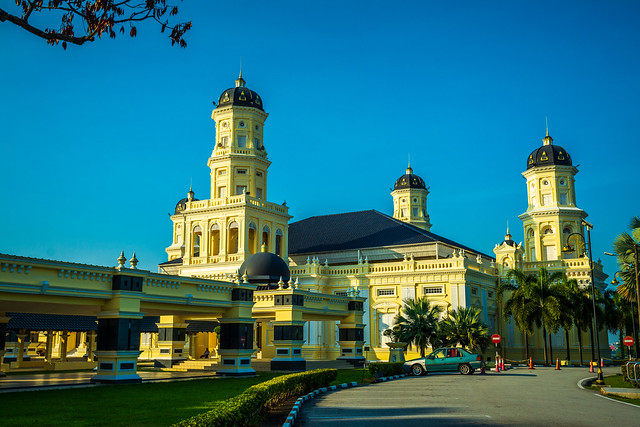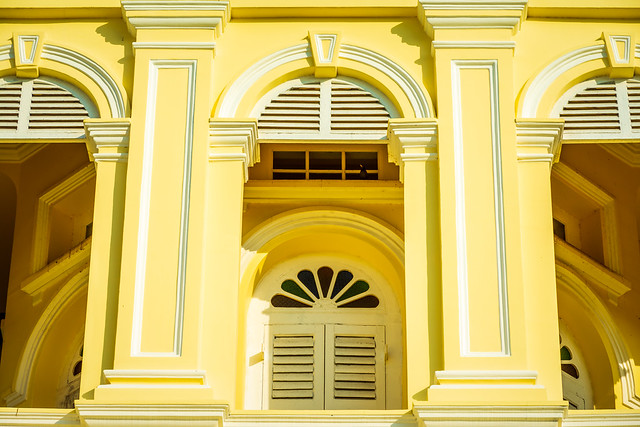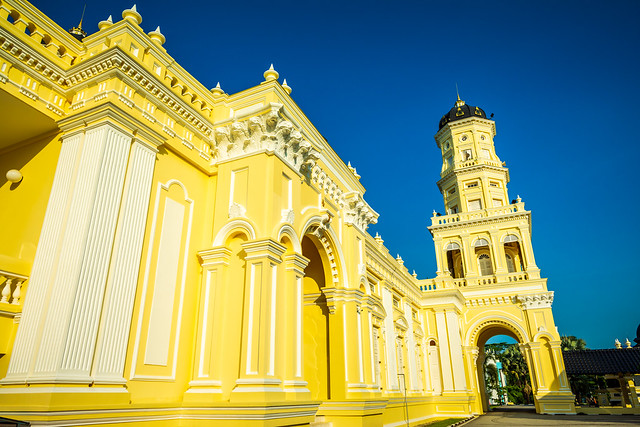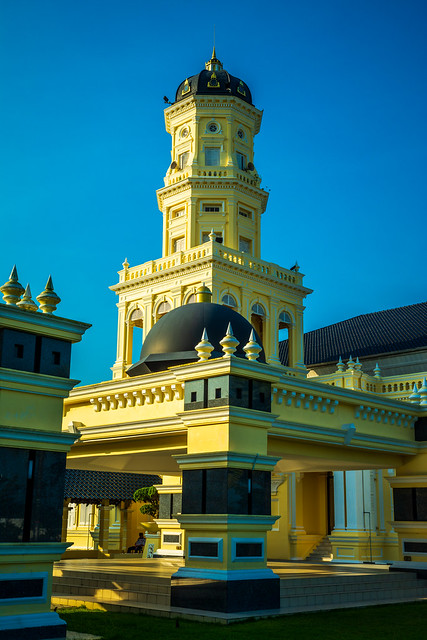 |
| Sultan Abu Bakar State Mosque |
The Sultan Abu Bakar Mosque is arguably the most beautiful mosque in Johor and it is also acknowledged as the state mosque of Johor. The history of the Sultan Abu Bakar Mosque dates back to the late 19th century when the Kingdom of Johor was ruled by Sultan Abu Bakar from 1862 to 1895. Sultan Abu Bakar is dubbed the Father of Modern Johor for his great contribution to the modernisation of Johor during his reign.
In fact, the construction of the magnificent mosque marked the beginning of Johor's modernisation process in 1892, which was commissioned by the "Father of Modern Johor". It took eight years to build and was completed in 1900. The architect responsible for the design of the mosque was Tuan Haji Mohamed Arif bin Punak and the construction was supervised by the Johor Government engineer, Dato' Yahya bin Awalluddin.
The construction of this mosque was part of the development and modernisation of Johor which started when the capital of the Sultanate of Johor was moved from Teluk Belanga in Singapore, to Tanjung Puteri, a fishing village which was later named Johor Bahru by Sultan Abu Bakar. This transfer occurred in 1866 and along with it, various buildings were also built to complement the needs as the center of the new kingdom.
The majestic mosque features unique fusion of architectural style of Victorian, Moorish and Malay although the principal style that dominates the entire structure is Victorian.
Among the Victorian style adorning the structure are the octagonal 4 minarets topped with domes which take the form of British 19th century clock tower. Besides there are Roman columns and pilasters that follow Victorian style and there are archways and balusters that feature the Moorish and Malay architecture. The construction of the elegant mosque cost 400,000 Malayan dollar and the mosque can accommodate 2,000 worshippers at any one time.
The mosque sits atop a small hill named Ledang Hill along Jalan Skudai, overlooking the Straits of Johor and Singapore to the south.
Unfortunately Sultan Abu Bakar passed away in 1895 before the mosque was completed in 1900. The mosque was later officially opened by his successor who was also his son, Sultan Ibrahim ibni Sultan Abu Bakar.
The Singapore Free Press and Mercantile Advertiser (Weekly) dated 19 April 1900 published a report titled Opening of the new mosque "Musjid Abubakar". It reported as follows:
To-day (Hari Raya Haji) the new Mosque was formally opened by H.H. Sultan in the presence of the chief officials and a great concourse of the Mohammedans of Johore and Singapore.
His Highness left the Istana at 8.30 AM, a royal salute of 21 guns being fired at that time from the Fort. On arriving at the Mosque H.H. was received by Guard of Honour from the Johore Artillery, the Band at the same time playing the Johore National Anthem.
A silver key was presented to His Highness by one of the Officials and the Sultan then advanced to the principal door and requested the Dato Khadi to read the prayer appointed for the opening.
This having been done H.H. turned the key which opened the door and entered the Mosque and followed by those assembled. Special prayers were then recited together, with supplication to The Almighty for the prosperity of His Highness and State and for the repose of the soul of the late Sultan Abubakar, after whom the Mosque is named.
At the close of the ceremony an adjournment was made to the Istana Besar - where a tiffin in the Malay style was served to the guests, of whom upwards of 300 were present.
The day has been observed here as a public holiday amid general rejoicings of the people of Johore.
 |
| Fanlight windows inside the octagonal minaret |
 |
| Sultan Abu Bakar State Mosque |
 |
| The front minaret |
 |
| Symmetrical structure |
REFERENCES
Abubakar Mosque, Johore. (1925, May 1). Straits Budget. Page 14.
Opening of the new mosque "Musjid Abubakar". (1900, April 19). The Singapore Free Press and Mercantile Advertiser.
J.B's famous mosque past mid-century mark. (1951, January 28). Sunday Standard.





Comments
Post a Comment